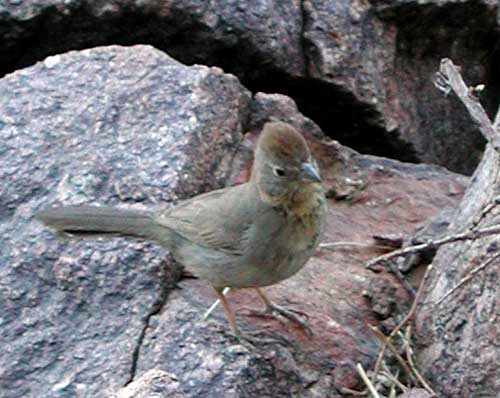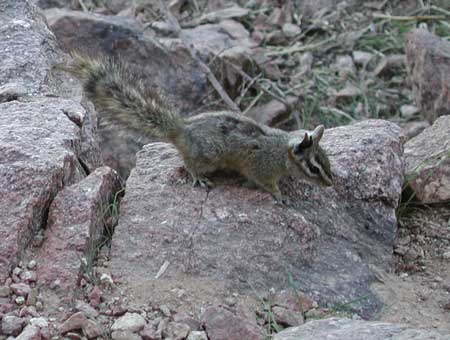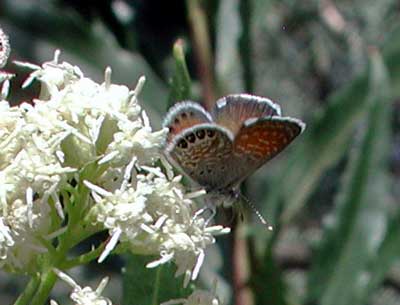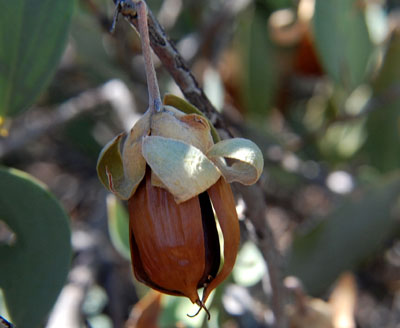Birds
In general order of Abundance:
- Rock Wren --S,F,W,Sp -- Common little birds which frequently give spirited high pitched trills while perched on top of a boulder or summit. Their drab gray and brown color blends perfectly with the desert colors.
- Cactus Wren --S,F,W,Sp--
- Canyon Wren --F,W,Sp --
- Verdin -- Auriparus flaviceps -- S,F,W,Sp-- Tiny birds, barely larger than a hummingbird. Drab gray brown with a majestic yellow head.
- Costa's Hummingbird --Sp,S-- Common. Green back; throat of males purple.
- Black-throated Sparrow --S,F,W,Sp
- Black-tailed Gnatcatcher -- Polioptila melanura -- S,F,W,Sp-- Fairly common in the bigger washes where the trees grow a bit larger.
- Canyon Towhee -- Pipilo fuscus --F,W,Sp-- large plain brown sparrow.
- Gila Woodpecker -- Melanerpes uropygialis --S,F,W,Sp-- Common woodpecker that builds nest holes in the Saguaro Cactus.
- Ash-throated Flycatcher -- S,F,W,Sp -- spring especially, rare in winter
- Turkey Vulture -- Sp,S,F,-- Large conspicuous soaring birds.
- White-crowned Sparrow -- Zonotrichia leucophrys --F,W,Sp--
- Mourning Dove --S,F,W,Sp--
- Curve-billed Thrasher -- Toxostoma curvirostre --S,F,W,Sp--
- Rufous-crowned Sparrow --S,F,W,Sp-- One seen near cave

Canyon Towhee



